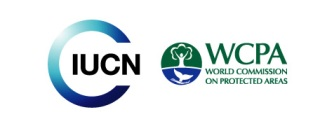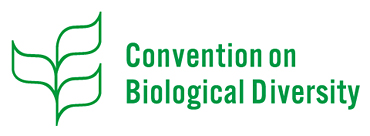Management and Monitoring Strategies
Chapter Coordinator: Yu-Fai Leung
Chapter contributors: Yu-Fai Leung, Robert Manning, Ralf Buckley, Anna Miller, Chelsey Walden-Schreinter, Debbit Mucha, Luis Monteiro
Chapter 7 Table of Contents
7.1 Introduction
7.2 Management Strategies
- 7.2.1 Demand and Supply
- 7.2.2 Management Practices
7.3 The Integrated Role of Monitoring
7.4 Monitoring Strageties
- 7.4.1 Basic Considerations
- 7.4.2 Tourism Infrastructure
- 7.4.3 Tourism Resources
- 7.4.4 Tourism and Visitor Use
- 7.4.5 Visitor Impact Monitoring
- 7.4.6 Visitor Experience Monitoring
7.5 Guidelines for Management and Monitoring Strategies
References
- Augar, N., & Fluker, M. (2014). Towards understanding user perceptions of a tourist-based environmental monitoring system: An exploratory case study. Asia Pacific Journal of Tourism Research. In press.
- Ashley C. and Barnes J. (1996). Wildlife use for economic gain: The potential for wildlife to contribute to development in Namibia. DEA Research Discussion Paper No 12. Windhoek, Namibia: Ministry of Environment and Tourism.
- Ballantyne, M., Gudes, O., & Pickering, C. M. (2014). Recreational trails are an important cause of fragmentation in endangered urban forests: A case-study from Australia. Landscape and Urban Planning, 130, 112-124.
- Barros, A., Monz, C., & Pickering, C. (2014). Is tourism damaging ecosystems in the Andes? Current knowledge and an agenda for future research. Ambio. In press.
- Boudreaux, K., and Nelson, F. (2011). ‘Community conservation in Namibia: Empowering the poor with property rights’. Economic Affairs 31(2):17–24.
- Buckley, R. (2003). Ecological indicators of tourist impacts in parks. Journal of Ecotourism, 2(1), 54-66.
- Capozzi, S., & Taylor, M. (2014). Recreation resource inventories and studies In: Baas, J., & Burns, R. (eds.), Best Practices in Recreation Resource Planning. Champaign, IL: Sagamore Publishing.
- Collomb, J.G.E., Mupeta, P., Barnes, G., and Child, B. (2010). ‘Integrating governance and socioeconomic indicators to assess the performance of community-based natural resources management in Caprivi (Namibia)’. Environmental Conservation 37(3):303–309.
- Conrad, C.T., and Daoust, T. (2008). ‘Community-based monitoring frameworks: increasing the effectiveness of environmental stewardship’. Environmental Management 41(3):358–66. doi:10.1007/s00267-007-9042-x
- Hall, C. M. and McArthur, S. (1998). Integrated Heritage Management: Principles and Practices. London, UK: The Stationery Office.
- Hammitt, W. E., Cole, D. N., & Monz, C. (2015). Wildland Recreation: Ecology and Management (3rd Ed.). New York: John Wiley and Sons.
- Hornbeck, K. E., and Eagles, P. F. J. (1999). Guidelines for Public Use Measurement and Reporting at Parks and Protected Areas. (Cambridge, UK: IUCN Publications Services Unit.
- IUCN. (2012). IUCN Conservation outlook assessments – Guidelines for their application to natural World Heritage Sites. Gland, Switzerland. Online Resource
- IUCN. (2014a). Brief – IUCN conservation outlook assessments. Retrieved from https://cmsdata.iucn.org/downloads/brief___iucn_conservation_outlook_assessments__0812.pdf. Online Resource
- IUCN. (2014b). IUCN – World Heritage Outlook. Retrieved from https://www.iucn.org/about/work/programmes/wcpa_worldheritage/about_world_heritage/worldheritageoutlook/.
- Kajala, L. (2009). Visitor monitoring in nature areas: The Nordic-Baltic manual and its application in Finland. Paper presented at the Monitoring and Management of Visitors and Visitor Flows, Rovaniemi, Finland.
- Kajala, L. (2013). Visitor monitoring in Finnish national parks and ASTA visitor information system. Paper presented at the Visitor Monitoring in National Parks Workshop, Gardemoen Airport, Norway.
- Kajala, L., Almik, A., Dahl, R., Dikšaitė, L., Erkkonen, J., Fredman, P., & Wallsten, P. (2007). Visitor monitoring in nature areas: A manual based on experiences from the Nordic and Baltic countries. Stockholm, Sweden: Swedish Environmental Protection Agency
- Leung, Y.-F. (2012). Recreation ecology research in East Asia's protected areas: Redefining impacts? Journal for Nature Conservation, 20(6), 349-356.
- Leung, Y.-F., Newburger, T., Jones, M., Kuhn, B., & Woiderski, B. (2011). Developing a monitoring protocol for visitor-created informal trails in Yosemite National Park, USA. Environmental Management, 47(1), 93-106.
- Lucey, W. P., & Barraclough, C. L. (2001). A User Guide to Photopoint Monitoring Techniques for Riparian Areas - Field Test Edition. Kimberley, BC: Aqua-Tex Scientific Consulting Ltd.
- Manning, R., and L. Anderson. (2012). Managing Outdoor Recreation: Case Studies in the National Parks. Wallingford, UK: CABI Publishing.
- Marion, J. L., & Wimpey, J. (2011). Informal Trail Monitoring Protocols: Denali National Park and Preserve (Blacksburg, VA: USDI Geological Survey, Patuxent Wildlife Research Centre, Virginia Tech Field Unit. Online Resource
- McCool, S. F. (2006). Managing for visitor experiences in protected areas: Promising opportunities and fundamental challenges. Parks, 16(2), 3-9. Online Resource
- Miller, A. B., Leung, Y.-F., & Lu, D.-J. (2012). Community-based monitoring of tourism resources as a tool for supporting the Convention on Biological Diversity Targets: A preliminary global assessment. Parks, 18(2), 120-134. Online Resource
- Miller, G., & Twining-Ward, L. (2005). Monitoring for a Sustainable Tourism Transition: The Challenge of Developing and Using Indicators. Wallingford, UK: CABI Publishing.
- Monz, C. A., Cole, D. N., Leung, Y.-F., & Marion, J. L. (2010). Sustaining visitor use in protected areas: Future opportunities in recreation ecology research based on the USA experience. Environmental Management, 45(3), 551-562.
- Naidoo, R., Weaver, L.C., De Longcamp, M., and Du Plessis, P. (2011). 'Namibia’s community-based natural resource management programme: an unrecognized payments for ecosystem services scheme'. Environmental Conservation 38(04):445–453.
- Newsome, D., Moore, S. A., & Dowling, R. K. (2013). Natural Area Tourism: Ecology, Impacts and Management (2nd Edition). Bristol, UK: Channel View Publications.
- Yosemite National Park (YNP) (2014). Visitor use and impact monitoring website. <http://www.nps.gov/yose/naturescience/visitor-use-monitoring.htm>. (accessed 13 October 2014)
- Pickering, C. M., Hill, W., Newsome, D., & Leung, Y.-F. (2010). Comparing hiking, mountain biking and horse riding impacts on vegetation and soils in Australia and the United States of America. Journal of Environmental Management, 91(3), 551-562.
- Průhonice Park, http://www.parkpruhonice.cz/ (accessed 10 June 2014)
- Reed, S. E., & Merenlender, A. M. (2008). Quiet, nonconsumptive recreation reduces protected area effectiveness. Conservation Letters, 1(3), 146-154.
- Stuart-Hill, G. (2011). 'Event Book – A tool for everyone'. Conservation and the Environment in Namibia, 14–15.
- Stuart-Hill, G., Diggle, R., Munali, B., Tagg, J., and Ward, D. (2005). 'The event book system: a community-based natural resource monitoring system from Namibia. Biodiversity and Conservation 14(11):2611–2631.
- Watson, A. E., Cole, D. N., Turner, D. L., & Reynolds, P. S. (2000). Wilderness Recreation Use Estimation: A Handbook of Methods and Systems (Gen. Tech. Rep. RMRS-GTR-56). Ogden, UT: USDA Forest Service, Rocky Mountain Research Station. Online Resource
- Whitelaw, G., Vaughan, H., and Craig, B. (2003). 'Establishing the Canadian community monitoring network'. Environmental Monitoring and Assessment 88:409–418.
- WTO (World Tourism Organisation) (2004). Indicators of Sustainable Development for Tourism Destinations: A Guidebook. Madrid: WTO.




